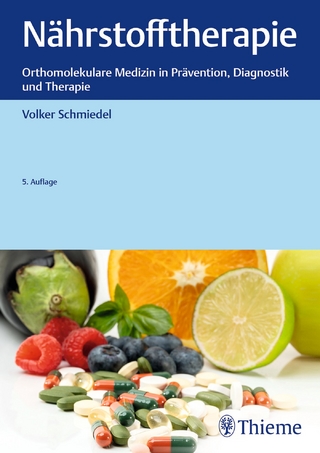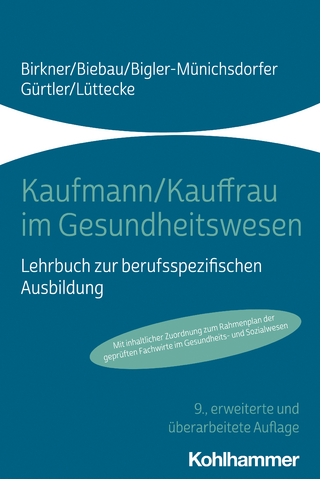
Trace Analysis of Specialty and Electronic Gases
John Wiley & Sons Inc (Verlag)
978-1-118-06566-2 (ISBN)
Explores the latest advances and applications of specialty and electronic gas analysis
The semiconductor industry depends upon a broad range of instrumental techniques in order to detect and analyze impurities that may be present in specialty and electronic gases, including permanent gases, water vapor, reaction by-products, and metal species. Trace Analysis of Specialty and Electronic Gases draws together all the latest advances in analytical chemistry, providing researchers with both the theory and the operating principles of the full spectrum of instrumental techniques available for specialty and electronic gas analysis. Moreover, the book details the advantages and disadvantages of each technique, steering readers away from common pitfalls.
Featuring contributions from leading analytical and industrial chemists, Trace Analysis of Specialty and Electronic Gases covers a wide range of practical industrial applications. The book begins with the historical development of gas analysis and then focuses on particular subjects or techniques such as:
Metals sampling and ICP-MS analysis
Improvements in FTIR spectroscopy
Water vapor analysis techniques
New infrared laser absorption spectroscopy approaches
GC/MS, GC/AED, and GC-ICP-MS techniques
Gas chromatography columns
Atmospheric pressure ionization mass spectrometry
Lastly, the book examines gas mixtures and standards that are critical for instrument calibration. There are also two appendices offering information on fittings and material compatibility.
With its thorough review of the literature and step-by-step guidance, Trace Analysis of Specialty and Electronic Gases enables researchers to take full advantage of the latest advances in gas analysis. Although the book's focus is the semiconductor and electronics industry, analytical chemists in other industries facing challenges with such issues as detection selectivity and sensitivity, matrix gas interference, and materials compatibility will also discover plenty of useful analytical approaches and techniques.
WILLIAM M. GEIGER, B.S., is Senior Partner of CONSCI, LTD, an independent service provider. He is responsible for implementation of analytical technology as it relates to gas analysis, including method development, turn-key instrumentation for customers, and consultation. Mr. Geiger has authored or coauthored numerous papers and presentations relating to trace gas measurement techniques. MARK W. RAYNOR, PhD, is Senior R&D Director at Matheson's Advanced Technology Center. He is responsible for the development of new gas products and precursors for the electronics industry, with an emphasis on the development of instrumental techniques for gas analysis as well as the synthesis, scale-up and purification of specialty gases. Dr Raynor has authored or coauthored more than sixty papers in analytical chemistry.
List of Figures xiii
List of Tables xxix
Foreword xxxiii
Acknowledgments xxxv
Acronyms xxxvii
1 Introduction to Gas Analysis: Past and Future 1
Suhas N. Ketkar
1.1 The Beginning 2
1.2 Gas Chromatography 5
1.3 Ion Chromatography 9
1.4 Mass Spectrometry 9
1.5 Ion Mobility Spectrometry 11
1.6 Optical Spectroscopy 11
1.7 Metals Analysis 12
1.8 Species Specific Analyzers 13
1.9 Sensors 16
1.10 Future 16
References 17
2 Sample Preparation and ICP–MS Analysis of Gases for Metals 21
Tracey Jacksier, Kohei Tarutani and Martine Carre
2.1 Introduction 21
2.2 Extraction of Impurities Before Analysis 22
2.3 Direct Analysis of ESGs 34
2.4 Conclusion 40
References 41
3 Novel Improvements in FTIR Analysis of Specialty Gases 43
Barbara Marshik and Jorge E. Pérez
3.1 Gas Phase Analysis Using FTIR Spectroscopy 43
3.2 Gas Phase Effects on Spectral Line Shape 44
3.3 Effects that Greatly Impact Quantification 55
3.4 Future Applications 68
References 69
4 Emerging Infrared Laser Absorption Spectroscopic Techniques for Gas Analysis 71
Frank K. Tittel, Rafal Lewicki, Robert Lascola and Scott McWhorter
4.1 Introduction 71
4.2 Laser Absorption Spectroscopic Techniques 72
4.3 Applications of Semiconductor LAS Based Trace Gas Sensor
Systems 88
4.4 Conclusions and Future Trends 99
References 100
5 Atmospheric Pressure Ionization Mass Spectrometry for Bulk and Electronic Gas Analysis 111
Daniel R. Chase and Glenn M. Mitchell
5.1 Introduction 111
5.2 APIMS Operating Principle 112
5.3 Point-to-Plane Corona Discharge Ionization 113
5.4 Factors Affecting Sensitivity in Point-to-Plane Corona Discharge APIMS 114
5.5 Applications of Point-to-Plane Corona Discharge APIMS in Bulk and Electronic Gases 120
5.6 63Ni Beta (β) Emitter APIMS 132
5.7 Specialty Gas Analysis Application: Determination of Oxygenated Impurities in High Purity Ammonia 136
5.8 Conclusion 144
References 144
6 GC/MS, GC/AED, and GC–ICP–MS Analysis of Electronic Specialty Gases 151
Daniel Cowles, MarkW. Raynor andWilliam M. Geiger
6.1 Introduction 151
6.2 GC/MS 153
6.3 GC/AED 164
6.4 GC–ICP–MS 173
6.5 Conclusions 191
References 191
7 Trace Water Vapor Analysis in Specialty Gases: Sensor and Spectroscopic Approaches 195
Mark W. Raynor, Kris A. Bertness, Kevin C. Cossel, Florian Adler and Jun Ye
7.1 Introduction 195
7.2 Primary Standards for Water Vapor Measurement 197
7.3 Sensor Technologies 200
7.4 Spectroscopic Methods 211
7.5 Conclusion 239
References 240
8 Gas Chromatographic Column Considerations 251
Daron Decker and Leonard M. Sidisky
8.1 Column Considerations with Packed Columns 252
8.2 Primary Selection Criteria for Capillary Columns 258
8.3 Applications 263
8.4 Future 272
8.5 Conclusion 272
References 273
9 Gas Mixtures and Standards 275
Stephen Vaughan
9.1 Introduction 275
9.2 Definition of Gas Standards 276
9.3 Cylinders and Valves Sizes, Types, and Material Compositions 280
9.4 Preparation Techniques for Gas Standards 284
9.5 Pressure Restrictions and Compressibility Considerations 290
9.6 Multi-Component Standards General Considerations 292
9.7 Cylinder Standard Stability Consideration 293
9.8 Liquefied Compressed Gas Standards Preparation Differences and Uses 295
9.9 Cylinder Standard Alternatives 297
9.10 Dilution Devices and Calibration Uses 297
References 299
A Cylinder and Specialized Fittings 301
A.1 Cylinder Fittings 301
A.2 Specialized Fittings 310
B Materials of Construction 321
B.1 Tubing, Transfer Lines and Other Hardware 322
B.1.1 Valves 330
B.2 FTIR Materials 332
B.2.1 O-rings/Gaskets 334
B.2.2 Cells/Mirrors 334
Index 337
| Erscheint lt. Verlag | 5.11.2013 |
|---|---|
| Verlagsort | New York |
| Sprache | englisch |
| Maße | 163 x 241 mm |
| Gewicht | 699 g |
| Themenwelt | Studium ► Querschnittsbereiche ► Prävention / Gesundheitsförderung |
| Naturwissenschaften ► Chemie ► Analytische Chemie | |
| Naturwissenschaften ► Chemie ► Technische Chemie | |
| Technik | |
| ISBN-10 | 1-118-06566-2 / 1118065662 |
| ISBN-13 | 978-1-118-06566-2 / 9781118065662 |
| Zustand | Neuware |
| Haben Sie eine Frage zum Produkt? |
aus dem Bereich


